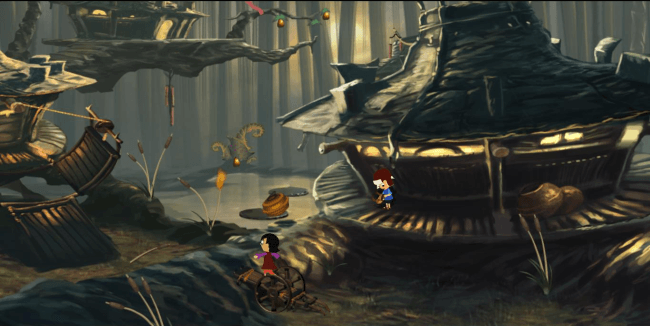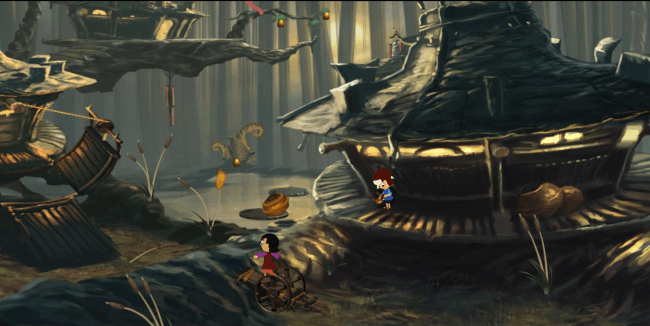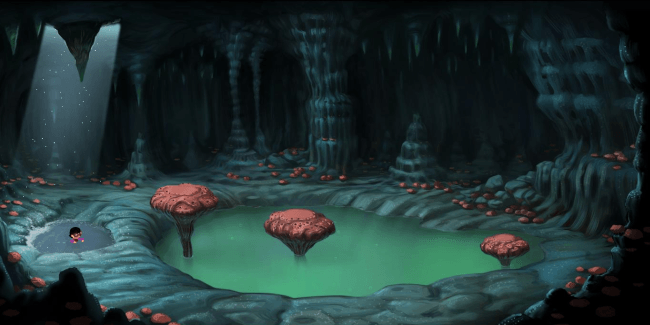- Wondering how to get Monopoly GO! free rolls? Well, you’ve come to the right place. In this guide, we provide you with a bunch of tips and tricks to get some free rolls for the hit new mobile game. We’ll …
Best Roblox Horror Games to Play Right Now – Updated Weekly
By Adele Wilson
Our Best Roblox Horror Games guide features the scariest and most creative experiences to play right now on the platform!The BEST Roblox Games of The Week – Games You Need To Play!
By Sho Roberts
Our feature shares our pick for the Best Roblox Games of the week! With our feature, we guarantee you'll find something new to play!All Grades in Type Soul – Each Race Explained
By Adele Wilson
Our All Grades in Type Soul guide lists every grade in the game for all races, including how to increase your grade quickly!
Lilly Looking Through Review
The world of Lilly Looking Through is a gorgeous, hand-painted landscape that is more Don Bluth than Disney, a place where fantasy is only the dressing of a personal, human story. Its backdrop is a mechanical, gritty reality juxtaposed with the colorful, fairy tale impression of childhood. In the shoes of young Lilly, players will explore both sides of this setting, using a magical pair of goggles that allow Lilly to see and interact with the alternate version of her current environment.
Lilly’s journey through this world begins as a search for her younger brother, Row, who has been wrapped up and swept away by a piece of red cloth caught in an invisible breeze. The chase takes the form of a minimalistic point-and-click adventure, with no dialogue—save a few shouts from the siblings—or inventory system to manage. Each scene is a self-contained challenge as in Machinariumor The Tiny Bang Story, with Lilly moving ever-onward once she has traversed the current screen.
This means that puzzles in Lilly Looking Through are generally more decipherable than those found in sprawling, multi-location adventures like those by Daedalic. Until the very end of the game, the goal is always to get from one side of the screen to the other, with all the objects and tools required to do so located within the same scene. When a loose on-screen item is needed, it will be picked up by the player and moved to its destination directly without Lilly ever intervening. These interactions save players the frustration of watching Lilly wander around, picking up and attempting to use items futilely, and provide their own satisfying moments of physical interaction, like burning rope or popping bubbles.

Great when viewed through rose-colored goggles
The world of Lilly Looking Through is a gorgeous, hand-painted landscape that is more Don Bluth than Disney, a place where fantasy is only the dressing of a personal, human story. Its backdrop is a mechanical, gritty reality juxtaposed with the colorful, fairy tale impression of childhood. In the shoes of young Lilly, players will explore both sides of this setting, using a magical pair of goggles that allow Lilly to see and interact with the alternate version of her current environment.
Lilly’s journey through this world begins as a search for her younger brother, Row, who has been wrapped up and swept away by a piece of red cloth caught in an invisible breeze. The chase takes the form of a minimalistic point-and-click adventure, with no dialogue—save a few shouts from the siblings—or inventory system to manage. Each scene is a self-contained challenge as in Machinariumor The Tiny Bang Story, with Lilly moving ever-onward once she has traversed the current screen.
This means that puzzles in Lilly Looking Through are generally more decipherable than those found in sprawling, multi-location adventures like those by Daedalic. Until the very end of the game, the goal is always to get from one side of the screen to the other, with all the objects and tools required to do so located within the same scene. When a loose on-screen item is needed, it will be picked up by the player and moved to its destination directly without Lilly ever intervening. These interactions save players the frustration of watching Lilly wander around, picking up and attempting to use items futilely, and provide their own satisfying moments of physical interaction, like burning rope or popping bubbles.
Lilly’s tasks, then, are to interact with the anchored objects of the world and transport herself across them when directed. Every area of Lilly Looking Through contains some type of machine that must be tinkered with in order to open a path for our tiny heroine, from water wheels to wagons, pressure plates to boulder-moving levers. Despite being but a small child, Lilly is more than capable of using these simple machines to produce complex results that will help her reach her brother. Instructing her to do so is a heart-warming treat as she inevitably reaches roadblocks that never result in actual failure, but small missteps: bouncing backwards off a bubble, sliding down a boulder she cannot climb, or slipping on ice with a tiny yelp are just a few moments that endear Lilly beyond her already admirable no-hesitation trek to save Row.
Equally charming is Lilly’s other primary method of puzzle-solving: slipping on a pair of aviator goggles that allow her to enter a world parallel to the scene she’s standing in. Lilly’s “looking-through” world—whether it’s an actual alternate reality or merely her imagination—is very real to her, and she is able to interact with it just like the normal world she inhabits. Much of the looking-through world is bright and calm, with constant sunlight and lush vegetation: a fantasy world when compared to the cooler, duller, and often disarrayed other half of each scene. The most rewarding puzzles in Lilly Looking Through come from the ingenious merging of these dual realities. Simple moments may require players to merely enter a door that is blocked in the other, while the best utilize active changes that Lilly causes between the two, like growing a tree that she can climb or changing worlds mid-jump to reach a previously inaccessible area.
The problem is that these superb moments are few. Part of this is due to Lilly Looking Through‘s exceptionally short length, exacerbated by an abrupt cliffhanger ending with no indication that this is only part one of a series. With only ten challenges—17 if you generously count each “looking-through” scene separately—even if every puzzle was top-notch, the game would feel lacking.
And, unfortunately, they’re not. Lilly‘s puzzles range from overly linear and too-easy near the beginning to painfully obtuse and nonsensical near the end. A late-game puzzle requires you to change the color of a room by ringing color-dispensing bells. Why this is the solution, why the required color is required, or even what this has to do with anything in the game is unknown, and figuring out any of these aspects of the puzzle is an effort in sheer guesswork. Even some of Lilly‘s easier puzzles fall victim to this obtuseness: the machines needed to reach a goal are obviously critical, but figuring out what and how they are used requires testing out their actions and often receiving little feedback on what was actually accomplished. This also means watching Lilly climb up, pull down, step on, and other actions that—while adorable—become tiresome after the tenth time of sitting through her non-skippable animations.
The middle third of Lilly‘s puzzles are magical, though, and match the enchanting atmosphere and inventive mechanics that Geeta Games has created. Alternating between the two starkly different worlds to achieve the previously unachievable is surprising and rewarding, while Lilly herself is an endearingly likeable, if not overly quiet protagonist. If the rest of the game’s challenges and experiences lived up to—and felt as finished—as its strongest moments, Lilly Looking Through could be a tale worth telling through time. As it stands, it’s worth experiencing briefly before shelving for something more substantial.

The good

The bad
More articles...
Monopoly GO! Free Rolls – Links For Free Dice
By Glen Fox
Wondering how to get Monopoly GO! free rolls? Well, you’ve come to the right place. In this guide, we provide you with a bunch of tips and tricks to get some free rolls for the hit new mobile game. We’ll …Best Roblox Horror Games to Play Right Now – Updated Weekly
By Adele Wilson
Our Best Roblox Horror Games guide features the scariest and most creative experiences to play right now on the platform!The BEST Roblox Games of The Week – Games You Need To Play!
By Sho Roberts
Our feature shares our pick for the Best Roblox Games of the week! With our feature, we guarantee you'll find something new to play!All Grades in Type Soul – Each Race Explained
By Adele Wilson
Our All Grades in Type Soul guide lists every grade in the game for all races, including how to increase your grade quickly!








 “
“ “
“ “
“ “
“